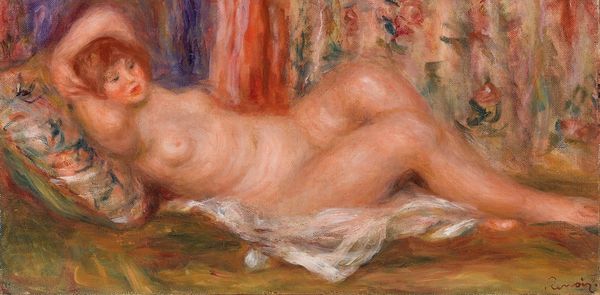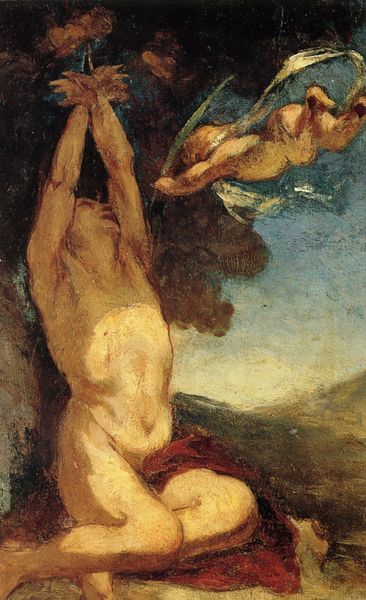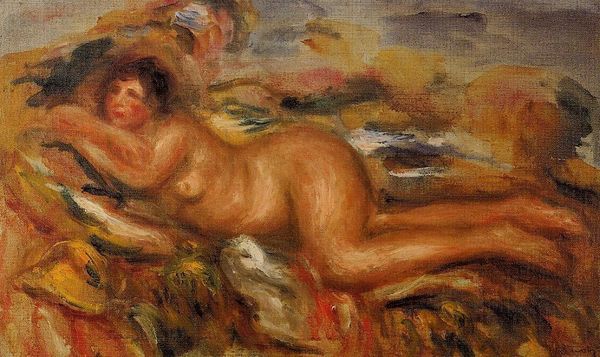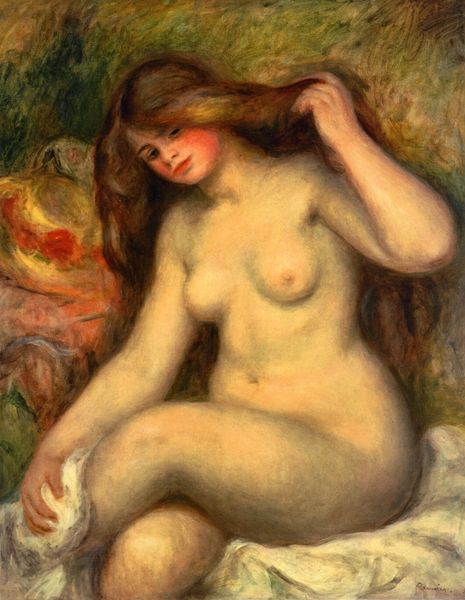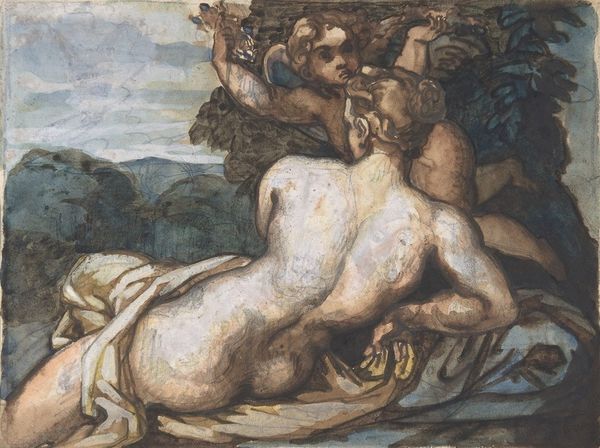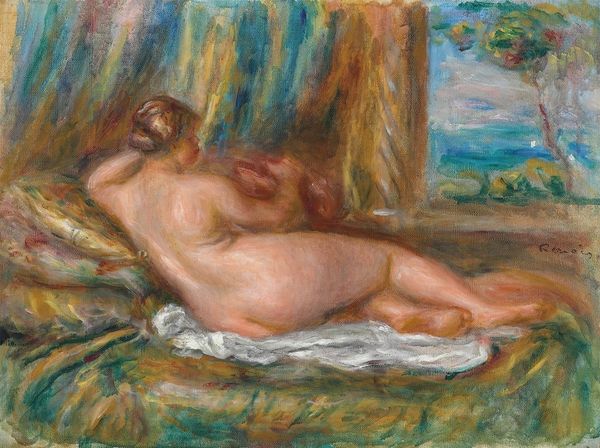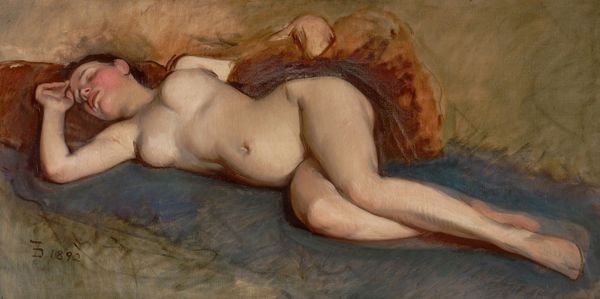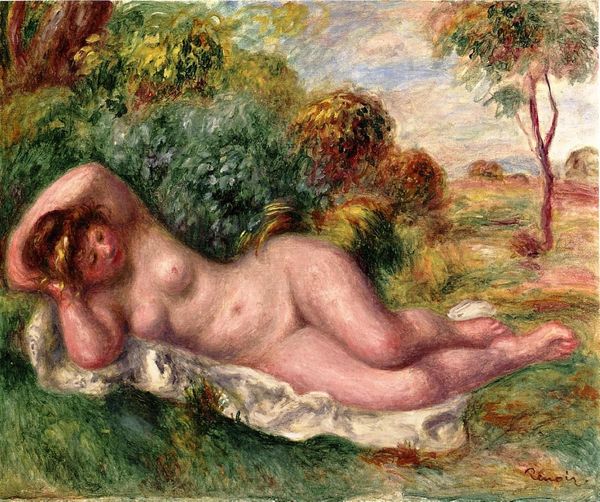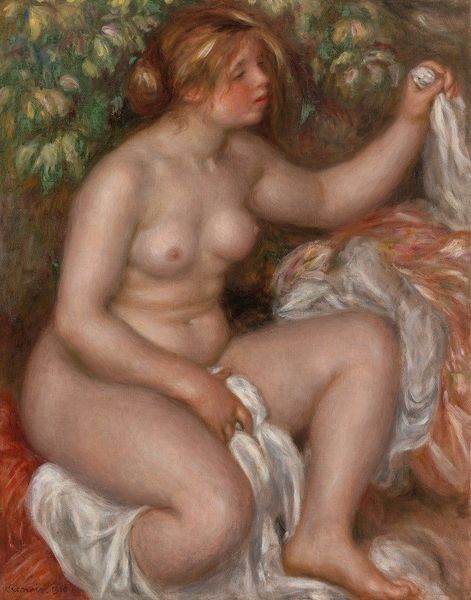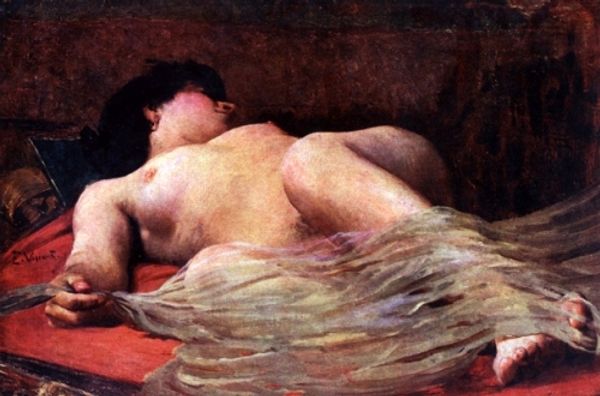
Copyright: Public domain
Curator: What a placid image, all muted greens and rosy flesh tones. Editor: The surface of that skin looks incredible. The visible brushstrokes practically give it texture. Curator: Indeed. What you're seeing is Pierre-Auguste Renoir's "The Spring," an oil painting from 1903. It very much embodies Renoir's idealized nudes set in equally romantic landscapes. Editor: "Romantic" is one word. It definitely romanticizes labor, doesn't it? That's a body that clearly hasn’t known a hard day's work, positioned against the blurred forms of nature. Curator: But Renoir often aimed to capture the ephemeral beauty of the natural world. It was his take on impressionism, wasn't it? In this painting, notice the loose brushwork used to evoke foliage and the flowing water. His subject isn't meant to illustrate everyday conditions. Editor: Still, consider the implied power dynamics, with Renoir holding all the visual authority. Look at the whiteness of that cloth. What's that linen actually made of and who processed the raw materials to construct that canvas or even prepare the paints themselves? These artistic processes aren't divorced from physical work and social structures. Curator: Certainly. One cannot dismiss the inherent social politics within his romanticized genre. He was of a social class and a historical setting, whose social expectations are reflected in the subjects artists choose. This reflects how artwork can solidify positions. Editor: Precisely! It’s a luxury object depicting a leisurely subject, utterly dependent on extensive, obscured labor for its very existence. I see a carefully constructed fiction. Curator: And a social document all at once. The work invites conversations far beyond aesthetic considerations and delves into areas like access, opportunity and representation. Thank you for sharing this analysis. Editor: My pleasure! Analyzing artworks in a socially engaged and historical perspective brings additional layers to one’s understanding and enhances a viewers critical perspective of visual arts, and what it stands for.
Comments
No comments
Be the first to comment and join the conversation on the ultimate creative platform.


